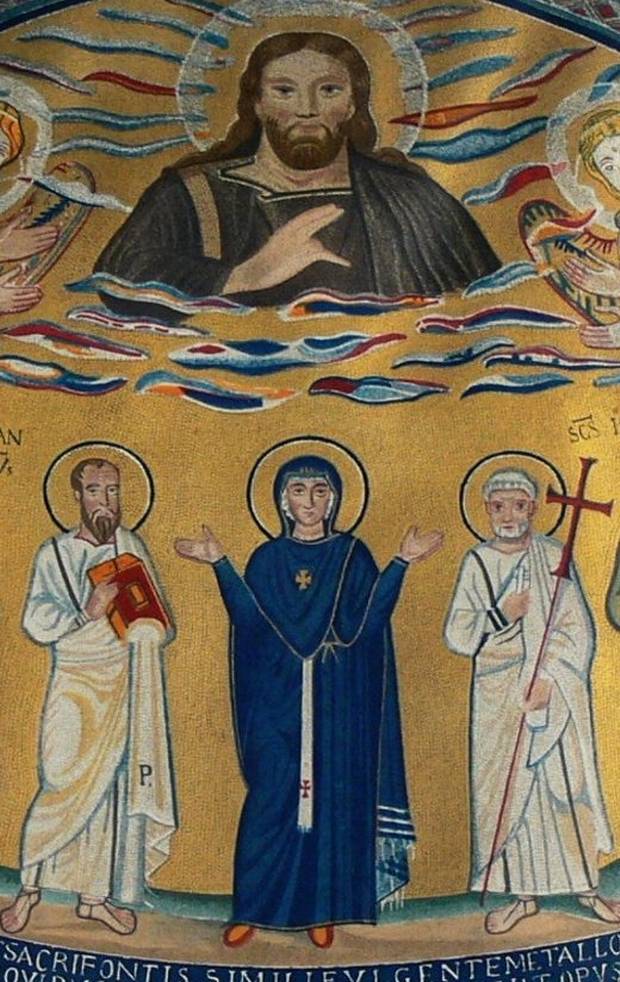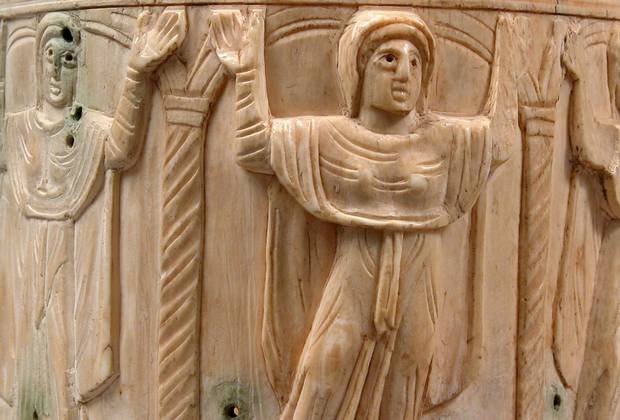Campaigners gather outside Vatican as church struggles with shortage of priests

Campaigners have gathered in Rome to call for the lifting of a ban on female priests that would “save the Catholic Church” where it is failing to ordain enough men.
Activists from the Women’s Ordination Worldwide (Wow) group protested outside the Vatican on Tuesday as the church’s hierarchy pondered the idea of allowing married men in the Amazon to become priests in order to plug the shortage in the region.
The activists argue that ordaining women priests would solve the issue as effectively and should be prioritised.
”Empowering women would save the church,” said Kate McElwee, a Rome-based representative of Wow. “Our church and our Earth are in crisis – and empowering women in roles that they are already serving in their communities is a solution. We’re advocating for equality and that includes ordination.”
The church has been struggling with a shortage of priests for decades, particularly in Europe and North America, which have had sharp falls in church membership as well as devastating sexual abuse scandals. In some places, priests have been moved from sub-Saharan Africa and Asia, where the church is flourishing, to fill vacancies.
While Pope Francis has opened up more discussion about women’s roles and appointed women in key Vatican positions, the topic of them becoming priests is still very much taboo. A huge number of women serve within the church around the world, outnumbering men in some countries, but they are denied the privilege of voting at Vatican synods, such as the one on the Amazon currently taking place, because they are not ordained.
“The consequences of this massive injustice are far-reaching beyond the church,” said Miriam Duignan, from Wow’s unit in the UK. “It’s not just a matter of who stands at the altar each Sunday and blesses the bread … women are silenced and sidelined, and this has a tidal effect beyond the priesthood in terms of how women are seen.”
The campaigners, who held umbrellas to shield themselves from the afternoon sun, said they were often insulted during protests, with one Rome police officer telling them to move away and close their umbrellas because they featured a “women priests” slogan.
Their biggest fear over the idea of allowing married men in the Amazon to be ordained is that the many women who already carry out ministerial roles in the region could be supplanted by men.
“The church would not be alive in the Amazon if it wasn’t for women,” said Duignan. “They are undertaking priestly roles without having the title of priest.”
Pat Brown, also from the UK, said the situation for women serving the church in the developing world is more acute. “It’s not so bad for us but they suffer this misogyny: the church endorses sexism.”
The Amazon synod, which wraps up on 27 October, has discussed the role of women in the region, with Cardinal Cláudio Hummes, the president of the synod, proposing that “a suitable ministry” be established for “women community leaders”. Many bishops have supported the ordination of married men despite criticism from more conservative factions.
The pope has previously said he would be open to allowing married men to be ordained in areas where there was a scarcity of priests, while maintaining the requirement for most priests to be celibate. He has also spoken about “allowing space for women in the church at all levels”.
As the event draws to a close, the Vatican on Tuesday lambasted the two extreme conservative Catholics who stole Amazonian statues from a church near the Vatican and dumped them in the Tiber River.
The wooden statues, which depict a pregnant woman and represent an indigenous Virgin Mary, were presented to the pope at the start of the synod but critics consider them to be pagan. Paolo Ruffini, the Vatican’s head of communications, said the theft was “a stupid stunt”.
The four statues were stolen from the Santa Maria in Traspontina church on Monday and the stunt filmed by the perpetrators.
“In the name of tradition and doctrine, an effigy of maternity and the sacredness of life was dumped in contempt,” said Ruffini, adding that the “violent and intolerant gesture” had “passed from hate on social media to action”.
Complete Article ↪HERE↩!





